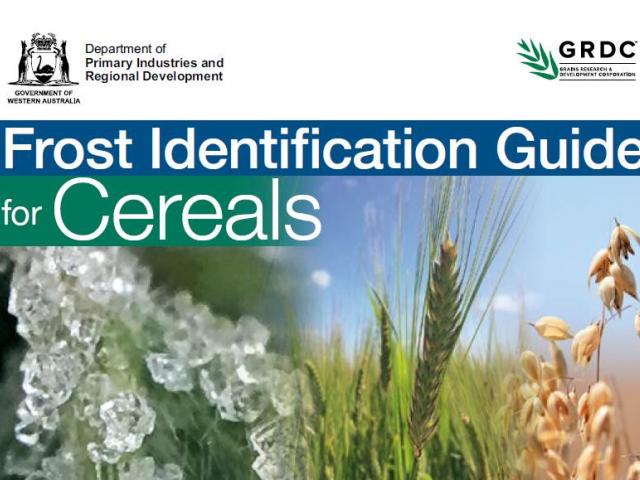Frost ID guide for cereals
A new guide has been published to assist cereal growers to identify frost damage and consider crop management decisions.
The guide will assist growers to make a timely, correct assessment of their crop so they can consider a range of management strategies to optimise their business margins.
It will enable growers to determine if their cereal plants have been damaged and to what extent or whether it could be something else that has produced similar symptoms.
The ‘Frost Identification Guide for Cereals’ was produced by the Department of Primary Industries and Regional Development (DPIRD), with co-investment from the Grains Research and Development Corporation.
As frost can sometimes be difficult to diagnose, the free guide features several high resolution photographs and clear explanations to help growers quickly and easily diagnose frost damage in wheat, barley and oats.
The guide also includes details on when to inspect crops, how to identify frost damage at the different stages of plant development, an overview of biotic and abiotic stresses that may have caused damage symptoms and a list of weblinks to more information.
The key points for frost assessment include:
- inspect crops when they are between ear-emergence and grain-filling and when temperatures fall below 2°C at your nearest weather station
- examine the crop in the lower parts of the landscape, particularly light textured soils first, and if damaged proceed to higher ground
- walk through the crop and examine a whole plant every 10-20 paces
- inspect for damage - if the head has not emerged from the boot, check that stem and developing head has not been damaged. If the head has emerged, open the florets to check that the grain is developing.
- tag a few heads with plastic tape and note the stage of grain fill. Return a week later to determine if grain filling is continuing. If the damage is very severe (eight or more heads killed out of 10) and a market for hay can be found, consider cutting the crop for hay. Do this as soon as possible after the frost so that the risk of microbial infection and loss of hay quality is small.
- if damage is not severe, yield losses may not be as great as first estimated, because of the compensation during grain filling. Monitor grain filling over the next three to four weeks.
Wheat, barley and oat crops are most susceptible to frost damage at flowering, although cereal crops can also be at risk during the early booting and grain filling stages.
Leaves, stem, anthers, ovaries and grain can all be affected by frost.
A plant may suffer stem, flowering and grain frost, especially if a series of frost events occur throughout development.
Featured in the guide are instructions on how to upload crop photographs to the free MyPestGuide Reporter app for frost diagnosis and advice from the department.
The guide will be available at the department’s Dale Frost and Canola field day, near Beverley, on Thursday 16 August in addition to your local DPIRD office.
Download the Frost Identification Guide
For more information contact Ben Biddulph, Research Officer, South Perth on +61 (0)8 9368 3431.


